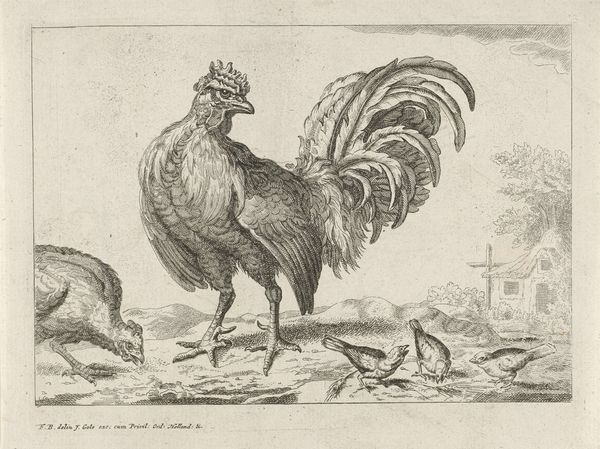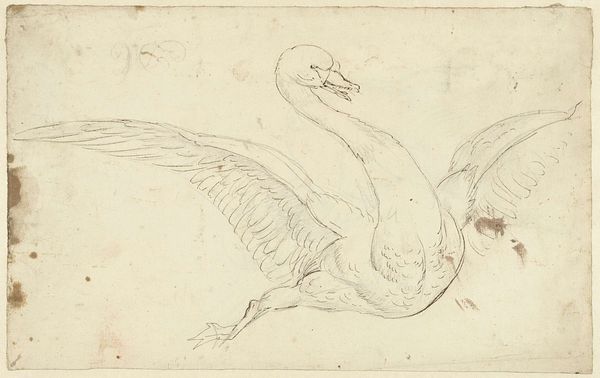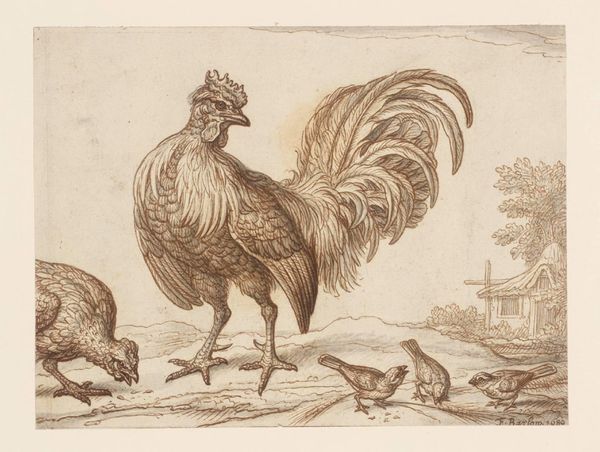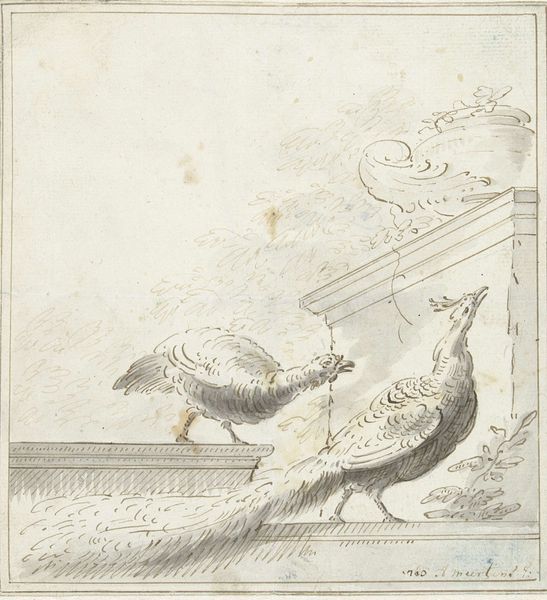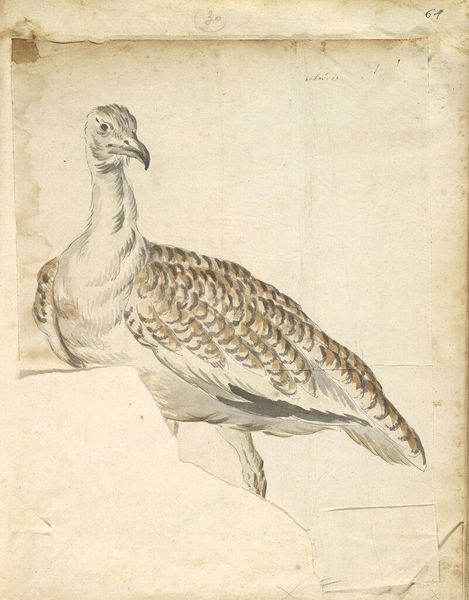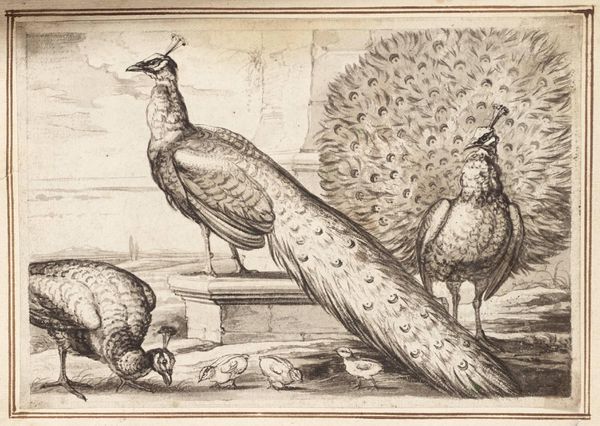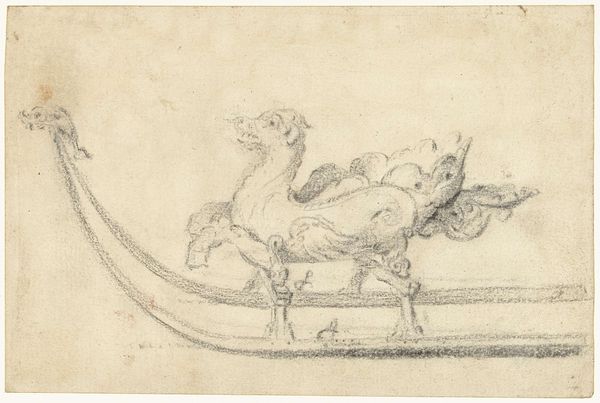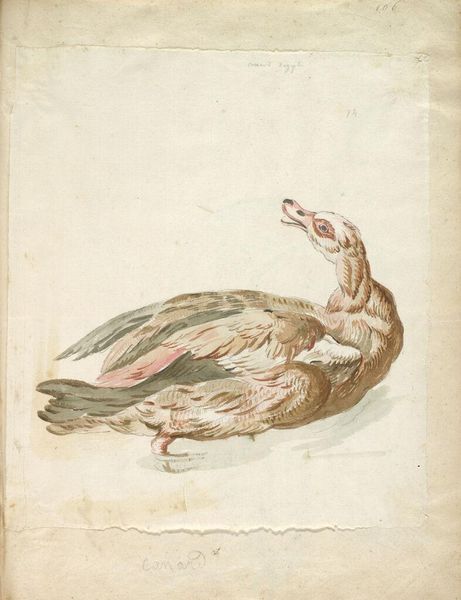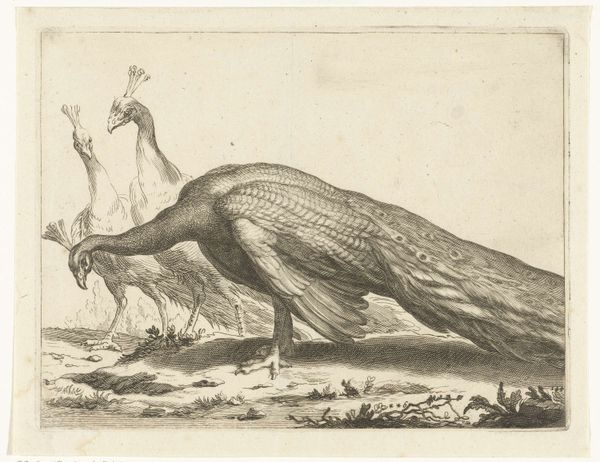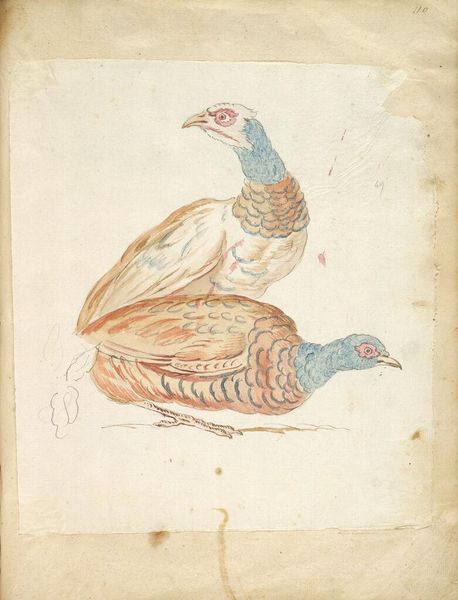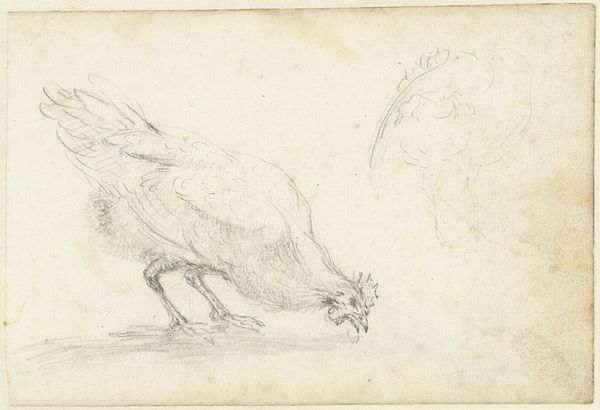
drawing, ink, pen
#
drawing
#
dutch-golden-age
#
pen sketch
#
figuration
#
ink
#
pen-ink sketch
#
pen
#
genre-painting
Dimensions: height 95 mm, width 150 mm
Copyright: Rijks Museum: Open Domain
Curator: Harmen ter Borch’s “Drie kalkoenen,” or “Three Turkeys,” drawn in 1653, uses pen and ink to depict a humble barnyard scene. It is now located in the Rijksmuseum. Editor: At first glance, there's a strangely gentle humor to this pen sketch. They almost appear as caricatures, with an odd dignity, like slightly bewildered gentlemen. Curator: It’s interesting you use the term 'gentlemen' because these animals were becoming increasingly fashionable amongst the upper classes during this era. Consider where ter Borch situated himself and his artistic production. Was it just a barnyard scene? Editor: Maybe that reading’s a bit too romantic then! It's definitely not idealized. There is an honesty to how he renders them; it avoids sentimentality, showing just the subtle textures of their plumage and skin. I'm also drawn to that peculiar head peeking in from the upper left corner, like a half-formed thought. Curator: Consider the materials. Ter Borch isn't using expensive paints or canvases; he chooses pen and ink. What does this say about its status? Is this a study? A doodle? Or could it have served a greater social function as perhaps a guide for less skilled artists, perhaps something reproduced by Ter Borch or assistants from his studio for mass consumption, something practical, rather than an attempt to elevate art? Editor: I can see that perspective. And yet, even within its modest format, there is real artistry. The delicacy of the line work, especially, captures so much personality. Also, let's not disregard its lasting charm. Something about that rawness makes the drawing more appealing to me today. It invites intimacy rather than demanding reverence. Curator: That feeling of intimacy speaks to changing market forces and increasing globalized exchange. The increasing desire amongst merchant classes for smaller, intimate works to place within increasingly decorated domestic interiors. Think how rapidly goods from other lands traveled into Dutch ports, including these once-exotic birds, becoming integrated into the economy of daily life and the imagery created. Editor: So, while rooted in the specifics of its time, ter Borch’s sketch still feels accessible. It prompts questions, perhaps because it holds itself open to different readings. Curator: A reminder that what might appear as a simple, even throwaway image from the past reveals layers of a complex, material world when we really examine it.
Comments
No comments
Be the first to comment and join the conversation on the ultimate creative platform.

